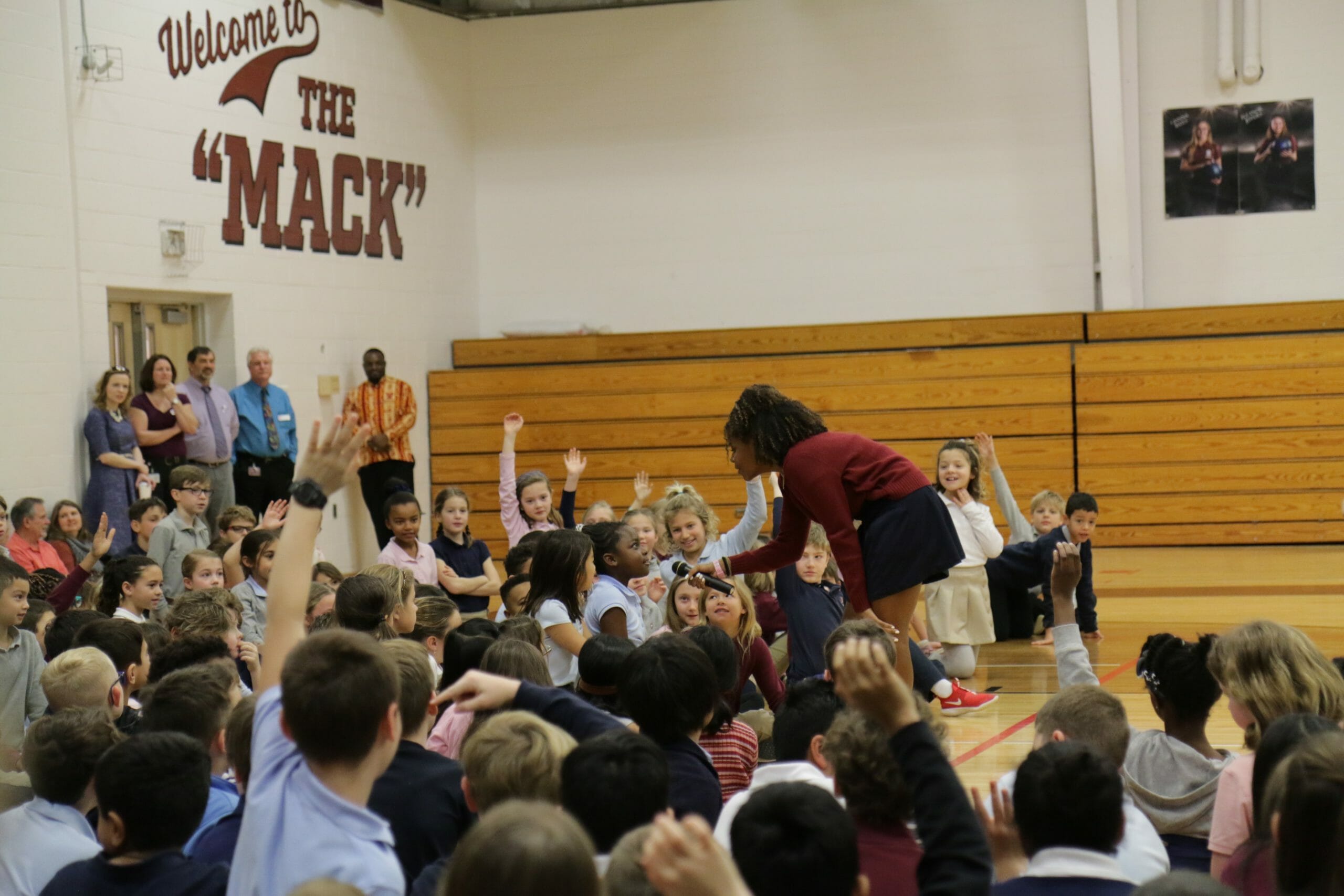Third graders participating in the music competition during the MLK assembly. (Sari Shocket’22/Media)
Dr. Martin Luther King Jr. was a beacon of hope for a nation shrouded in the darkness of hatred and discrimination during the American Civil Rights movement of the 1950’s -60’s. King was born on January 29, 1929, during a tumultuous time in American history because of the Great Depression and its effects on African-American citizens.
Dr. King was the son of a Baptist minister and followed in his father’s footsteps to become a pastor. Dr. King received his doctorate in theology in 1955, which was the same year that he played a significant role in the Montgomery Bus Boycott. Lead by King, African-Americans in Montgomery, Alabama, refused to ride city buses in response to a law prohibiting Black Americans from sitting in the front rows. Dr. King was imprisoned for his participation in this protest, but his brave actions led to changing this racist law.
The boycott led to Dr. King’s emergence as an American Civil Rights icon. Influenced by Mahatma Gandhi, Dr. King based his leadership on civil disobedience and nonviolent resistance to racial segregation. Despite being arrested twenty times along with the bombing of his home in 1956, Dr. King refused to turn to the same violence as his oppressors.
Dr. King delivered his revered “I Have a Dream” address in 1963 to a crowd of 250,000 people gathered outside the Lincoln Memorial during the March on Washington for Jobs and Freedom. This speech was a pivotal moment for the Civil Rights Movement and led to Americans’ pressure upon President Lyndon B. Johnson to pass and recognize Civil Rights laws on a national level.
At just 35 years old, Dr. King was the youngest person to win the Nobel Peace Prize in 1964. He was assassinated at age 39 on April 4, 1968, in Memphis, Tennessee, while supporting the Memphis Sanitation Worker strike. Martin Luther King Jr. Day is celebrated on the third Monday of January each year to commemorate King’s achievements.
This year, the Upper School approached MLK Day in a new manner that challenged the ways that we conventionally remember Dr. King. On Wednesday, January 15, the Upper School student body broke into many small discussion groups of 20-30 students. The topics of discussion covered a wide range of issues, addressing aspects of every profession and interest: from medicine to music to economics, with no stone left unturned during these conversations.
Ms. Amy Berkley and Dr. Pascal Losambe created this year’s small discussion groups, which were intended to remind students that MLK and the Civil Rights Movement are not simple topics. King ’s influence touched every corner of the world, and through these discussions, Berkley and Losambe hoped students would feel the power of King’s movement. The diverse array of topics available to Upper School students allowed them to see just how multi-faceted the issue of Civil Rights was during the 20th century, as it remains to this day. This activity brought challenging discussions to the forefront of Upper School dialogue, which proved to be a change of pace from years past.
Although the Upper School discussion groups were new this year, tradition endured with the annual MLK Day assembly, which took place on Friday, January 17. In years past, performers or speakers from central Ohio visited CA to share their art or stories with the student body. This year, however, UCA, the student-lead group responsible for planning the assembly, wanted to highlight Columbus Academy and its internal community.
The school-wide assembly began with a song from the third grade, “Agents of Change.” The theme of this song—making changes in our community—fit in well with Dr. Losambe’s speech and story. United Columbus Academy (UCA) chose Dr. Losambe to speak at this year’s MLK assembly because he is both a powerful leader in our community and the embodiment of Academy’s values of compassion and respect.
Dr. Losambe told a story of a sandbox, which he intended to be a metaphor for Columbus Academy. In the story, children with access to opportunities use their eyes, feet, and voices to reach out to those who lack the resources to play in the sandbox with the other children. Although this story was geared towards the Lower and Middle Schoolers, Losambe also intended the message to be clear for older Vikings.
Dr. Losambe said that he wanted his speech to highlight that it may be easy to focus only on yourself, but the voices of students “are strong enough to impact change” in the Columbus Academy community. He hopes that in honor of Martin Luther King Jr.’s memory, “We will open our eyes to systems that are actively marginalizing others.”
Through new traditions and old, Martin Luther King Jr.’s memory lives on in the hearts and minds of our community, and as Dr. Losambe said, in our “eyes, feet, and voices” as well.
Dr. King fought for unity and harmony, and although we have not yet reached his goal, the best way to honor his memory is to remain conscious of others and the ways in which we can lift them up.








